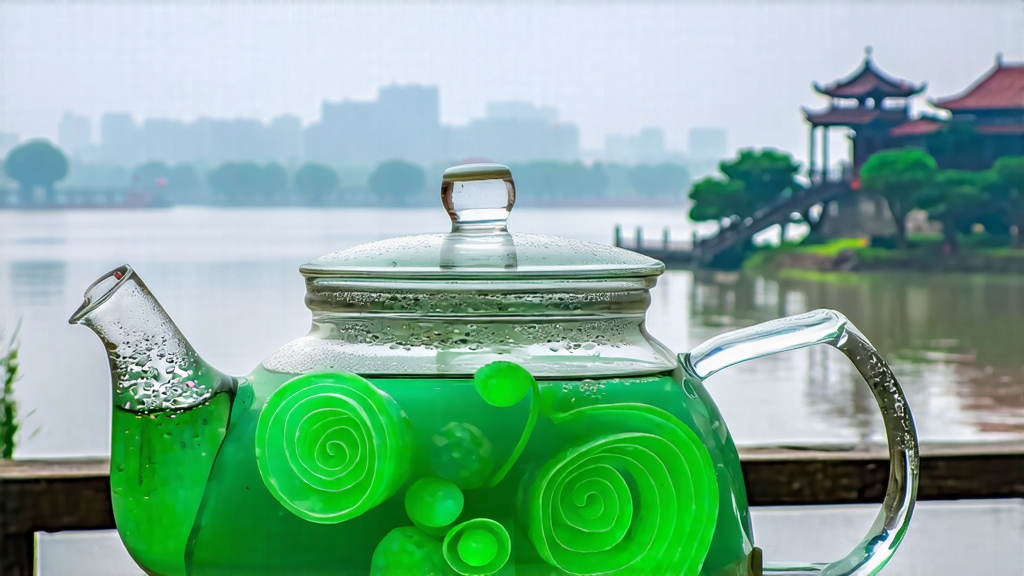
Among the countless shades of green that paint China’s tea landscape, few leaves are as diminutive yet as dazzling as Biluochun. Transliterated as “Green Snail Spring,” the name itself is a miniature poem: bi for jade-green, luo for the spiral shell of a snail, and chun for the season when the first downy buds awake. International drinkers often meet it in boutique tins labeled “Pi Lo Chun,” but these phonetic approximations cannot contain the centuries of legend, terroir and craftsmanship locked inside every curl. This essay invites you to travel from Tang-dynasty poems to 21st-century sustainability labs, tracing how a sub-alpine shrub on Dongting Mountain became one of the world’s most coveted green teas.
Historical tapestry
The earliest written record appears in the Tang Bencao (659 CE), yet folklore pushes the story back further. One tale credits a tea-picking girl who tucked fresh shoots into her bodice; the warmth and floral scent of her skin inspired a monk to name the tea “Frighteningly Fragrant.” During the Kangxi reign (1662-1722) the emperor, touring Lake Tai, found the infusion so delicate that he rechristened it “Green Snail Spring” to celebrate its tight spiral and spring provenance. By the late Qing it had entered the imperial tribute list, transported in lead-lined chests along the Grand Canal to Beijing, where court poets compared its aroma to “orchids hidden in an apricot kernel.” The 1915 Panama-Pacific International Exposition awarded it a gold medal, sealing its global reputation long before modern air freight.
Micro-terroir: Dongting’s misty islands
Authentic Biluochun grows only on Dongting Mountain, actually two islands—Dongshan and Xishan—rising from Lake Tai in Jiangsu Province. The lake acts as a vast heat reservoir, creating morning fog that filters UV light and slows photosynthesis, forcing the plant to stockpile amino acids—especially L-theanine—responsible for the tea’s signature sweetness. Soils are quartz-sandstone mixed with eroded granite, acidic (pH 4.5–5.5) and fast-draining, encouraging deep root penetration. Fruit trees—peach, plum, apricot—are interplanted at 60–80 trees per mu (≈0.07 ha); their spring blossoms exude volatile esters that settle on the tea buds, adding an ineffable floral layer impossible to replicate elsewhere. Elevations of 200–300 m may seem modest, yet the vertical humidity gradient between lake surface and ridge top can exceed 20 %, a natural “humid chamber” that keeps leaf cells turgid and pliable for the demanding shaping process.
Cultivars and grades
The legally protected geographical indication (GI) allows only the Zhuye, Fudingdabaicha and Dongtingqunti local strains. Zhuye (literally “bamboo-leaf”) produces the smallest buds—barely 1.5 cm when open—yet delivers the highest concentration of dimethyl sulfide, lending a marine hint likened to nori. Within the GI, five official grades are recognized: Supreme, Special, Grade 1, 2 and 3, differentiated by picking window and bud-to-leaf ratio. Supreme must be 100 % single unopened bud, plucked within the first five days after Qingming festival; Grade 3 may contain one bud and two leaves, picked until Guyu. A skilled picker gathers only 400 g fresh material in a dawn shift; 5.5 kg of fresh buds shrink to 1 kg finished tea, explaining why top lots command over USD 2 000 per 500 g at pre-Qingming auctions.
Craft: the six breaths of fire and finger
Unlike flat-pan Longjing or needle-shaped Liuan Guapian, Biluochun is shaped entirely by hand while the leaf is still hot and wet. Villagers speak of “six breaths” that must synchronize:
- Withering: 2–3 h spread 2 cm deep on bamboo trays in shade; leaf turgor declines, grassy notes dissipate.
- Enzyme kill: a 60-cm diameter iron pan is heated to 180 °C within 90 s; 200 g of leaves are tossed for 3–4 min until the sound of “popcorn” subsides.
- Rolling: temperature drops to 70 °C; fingers press and twist